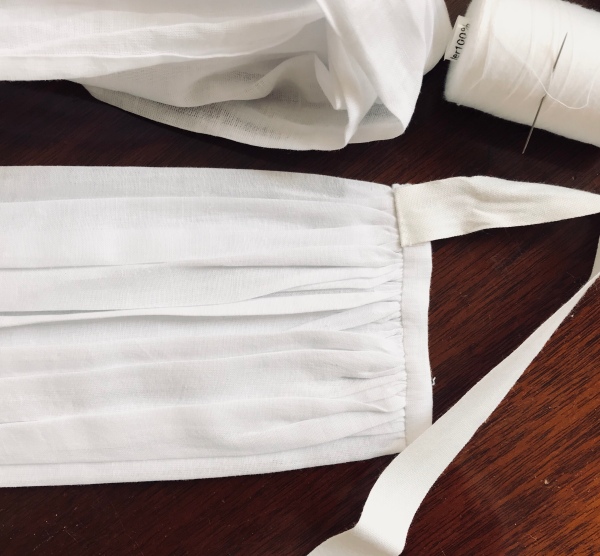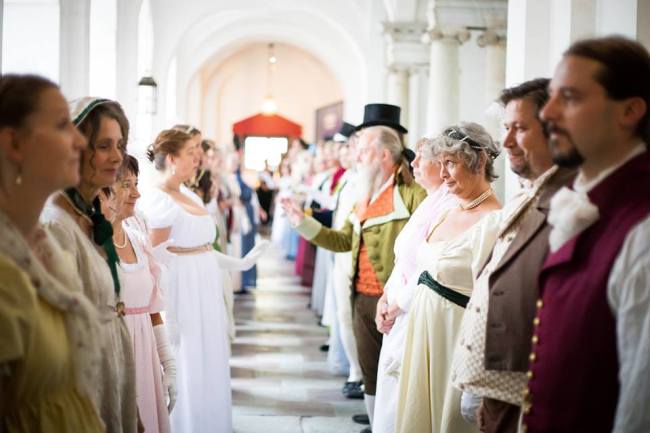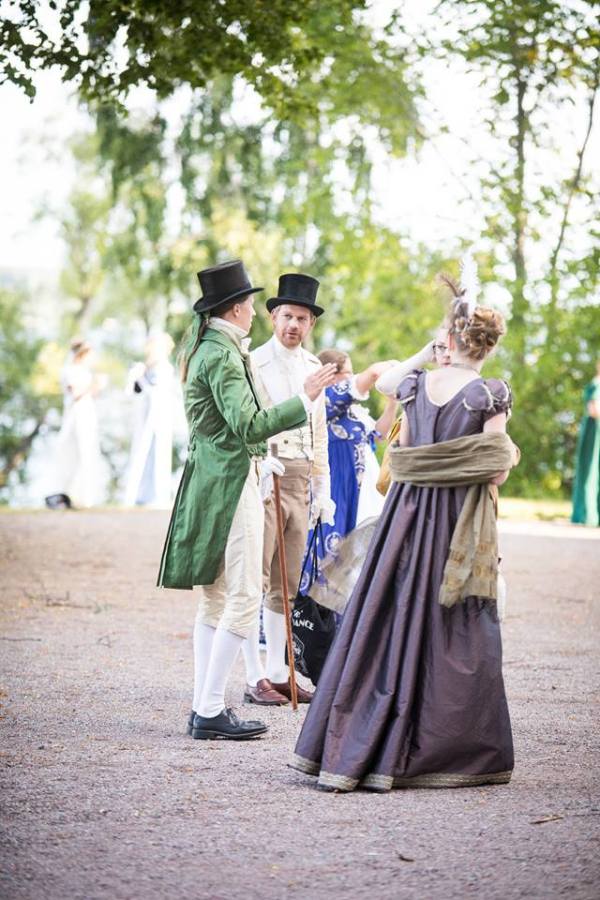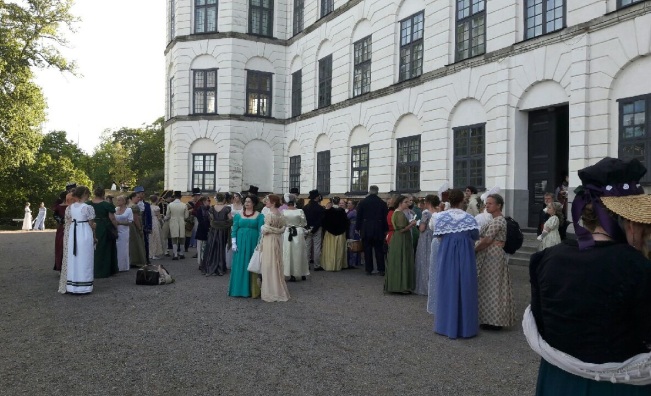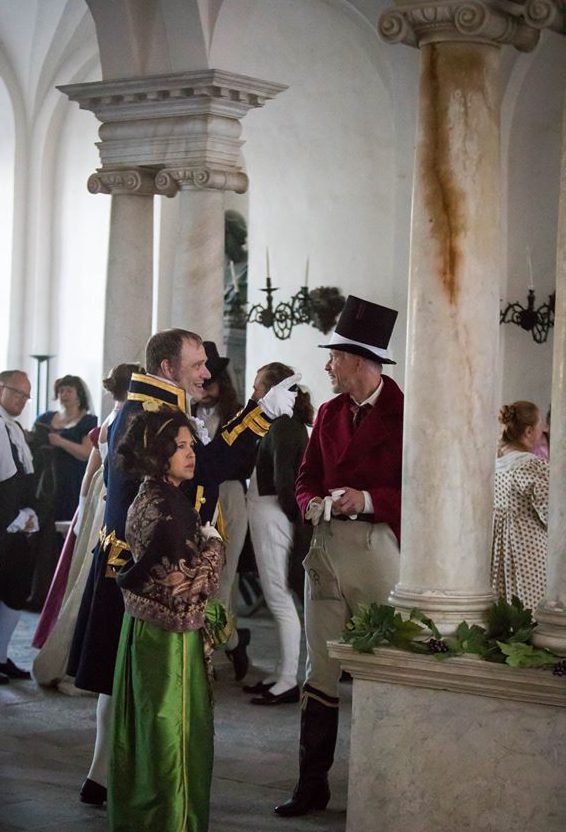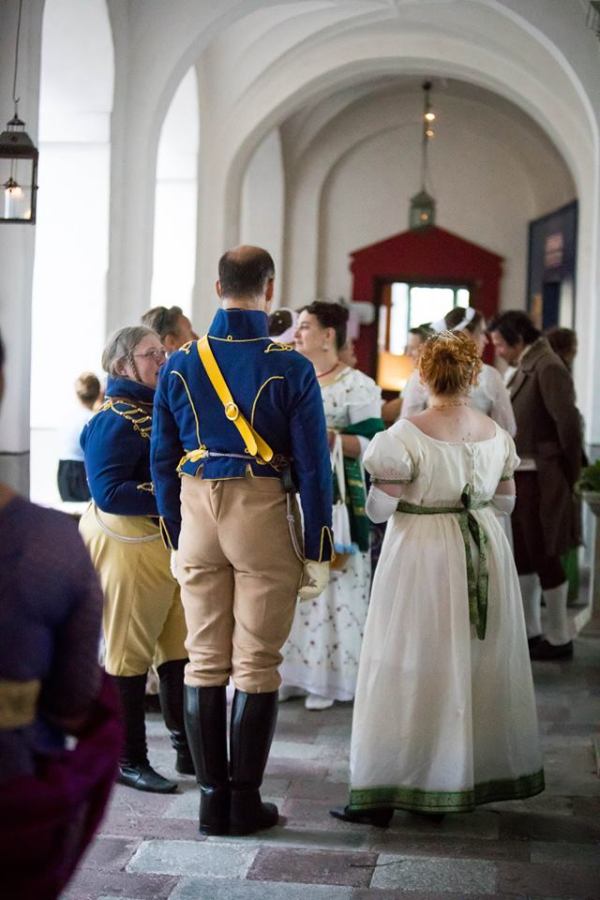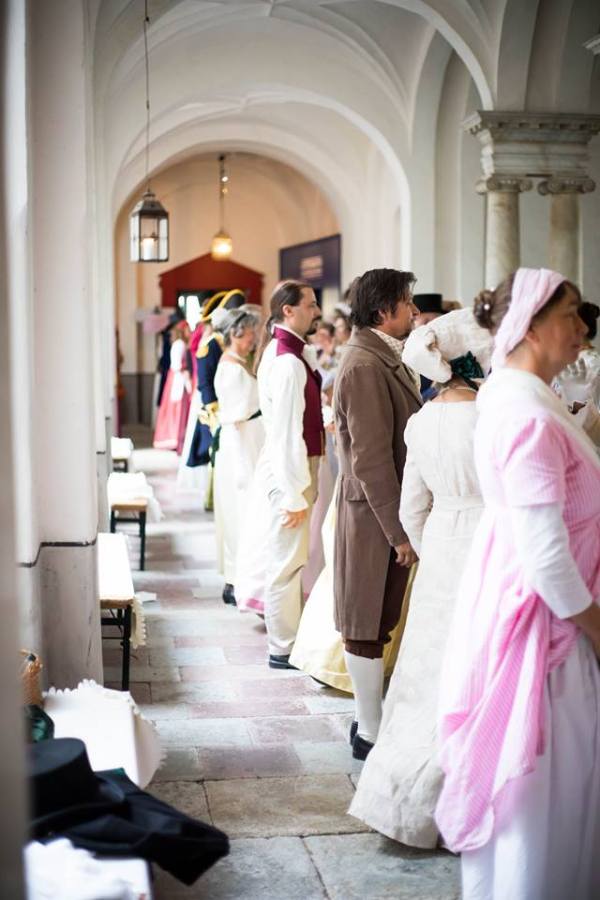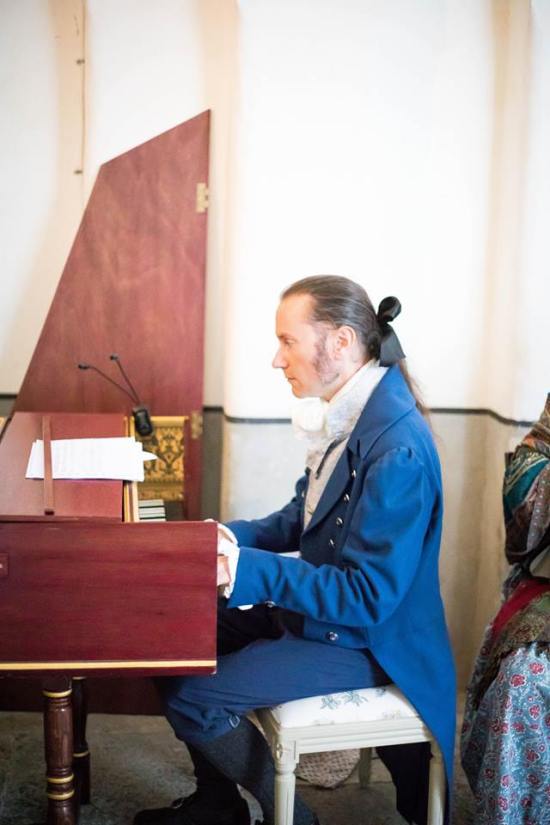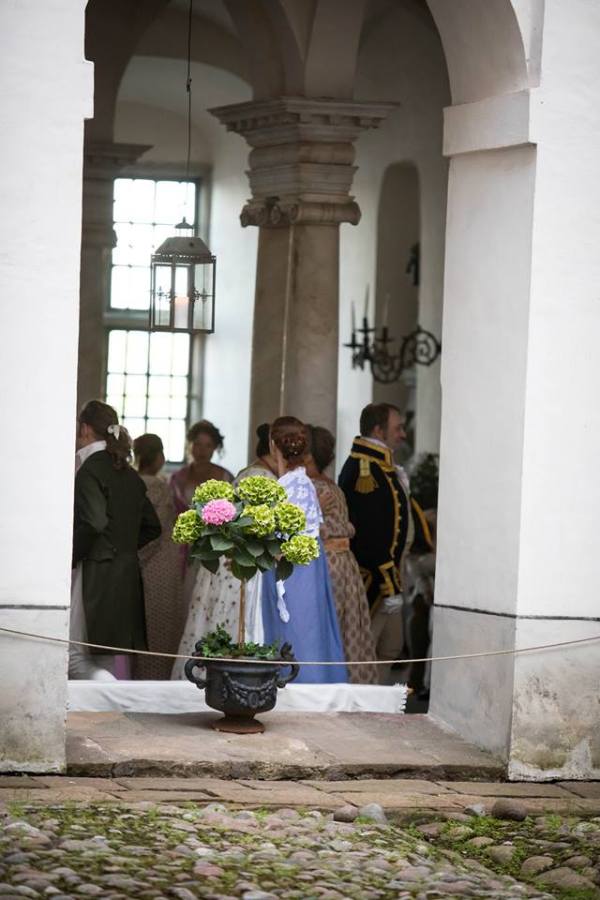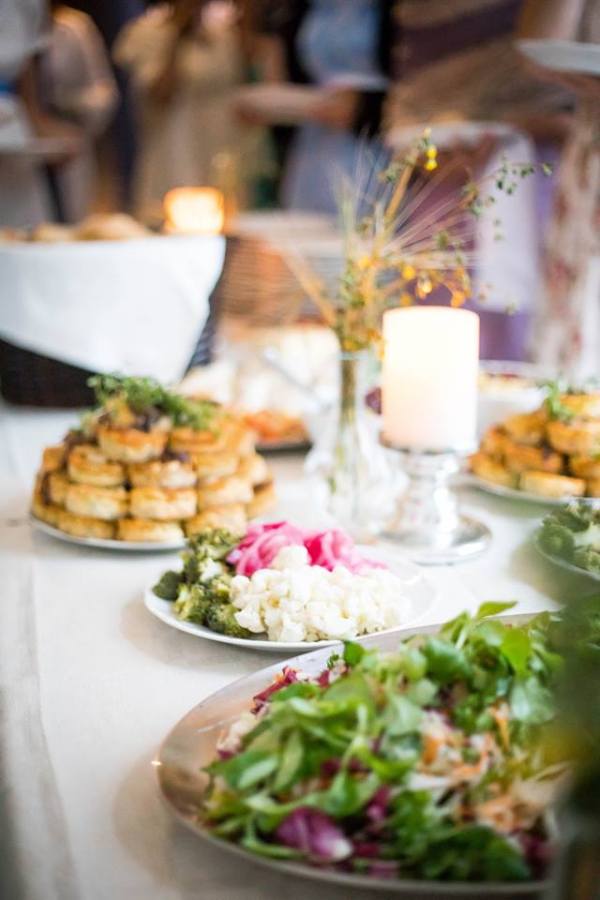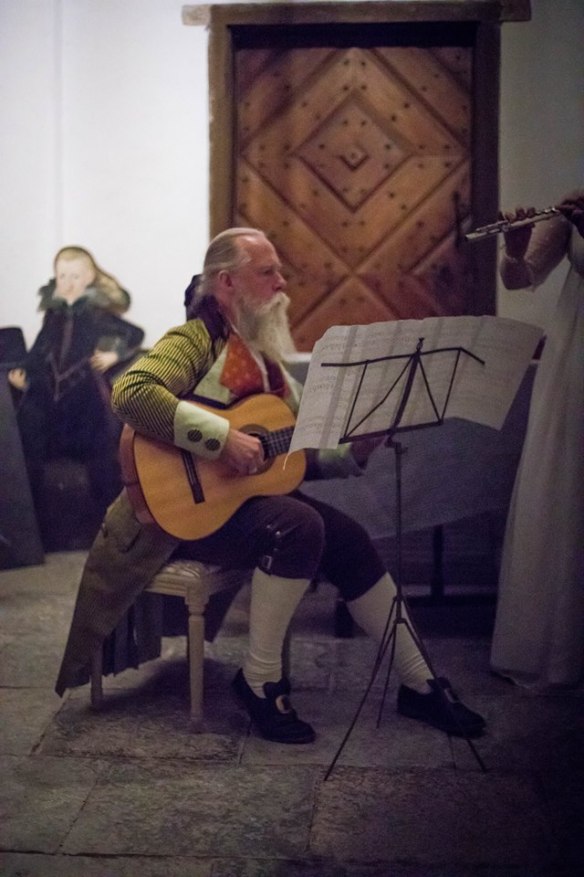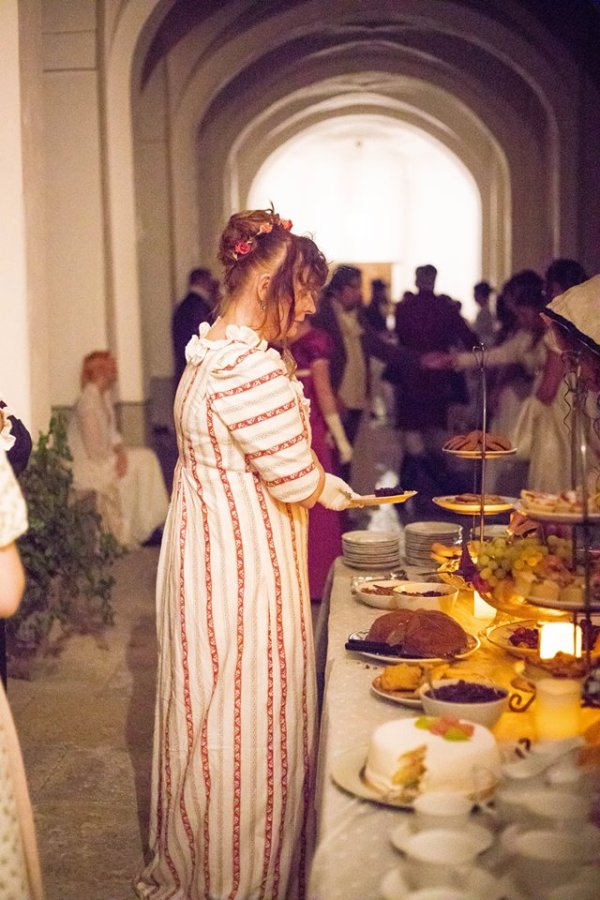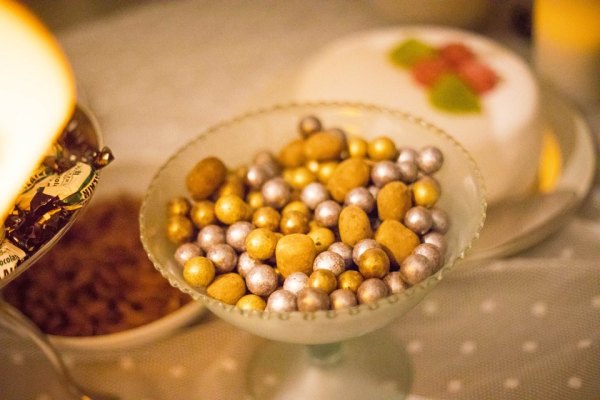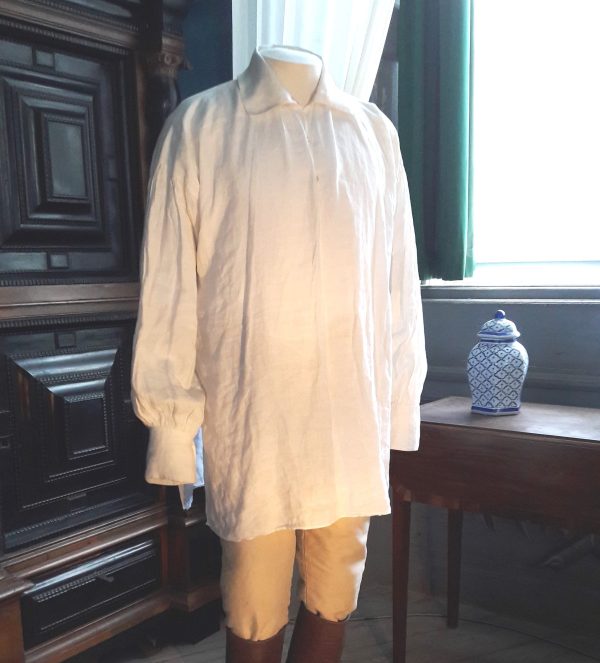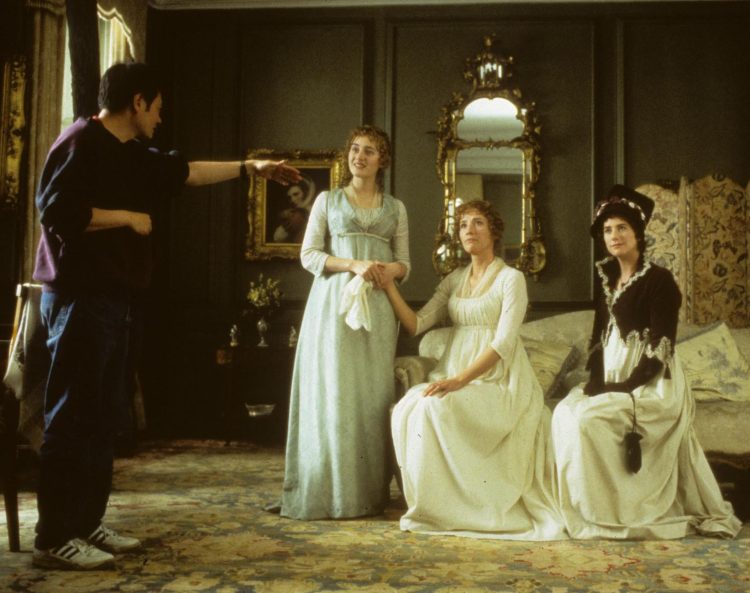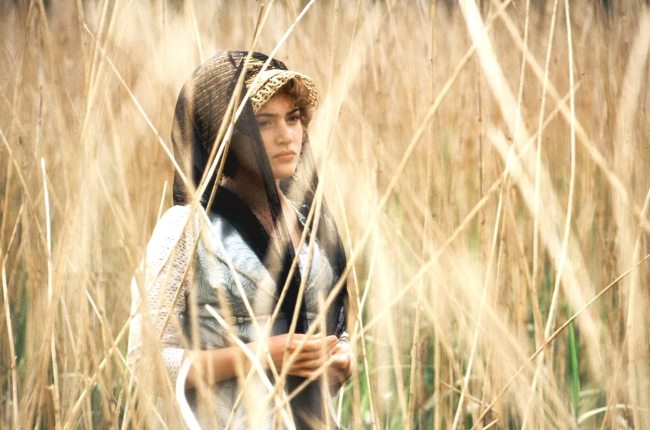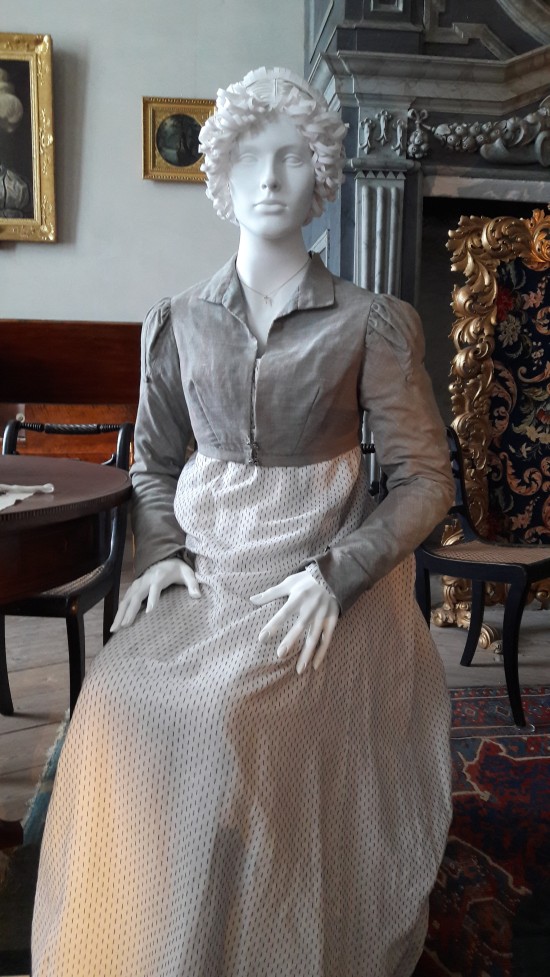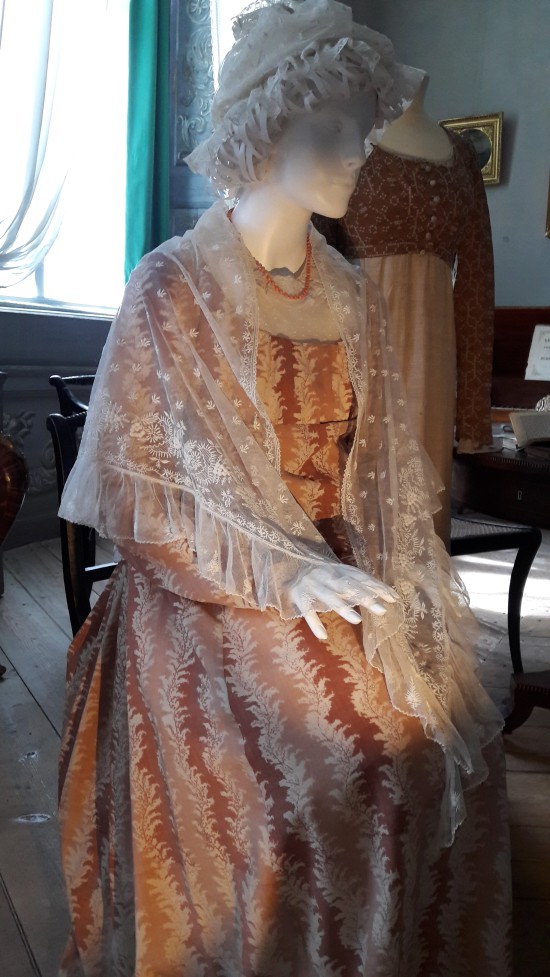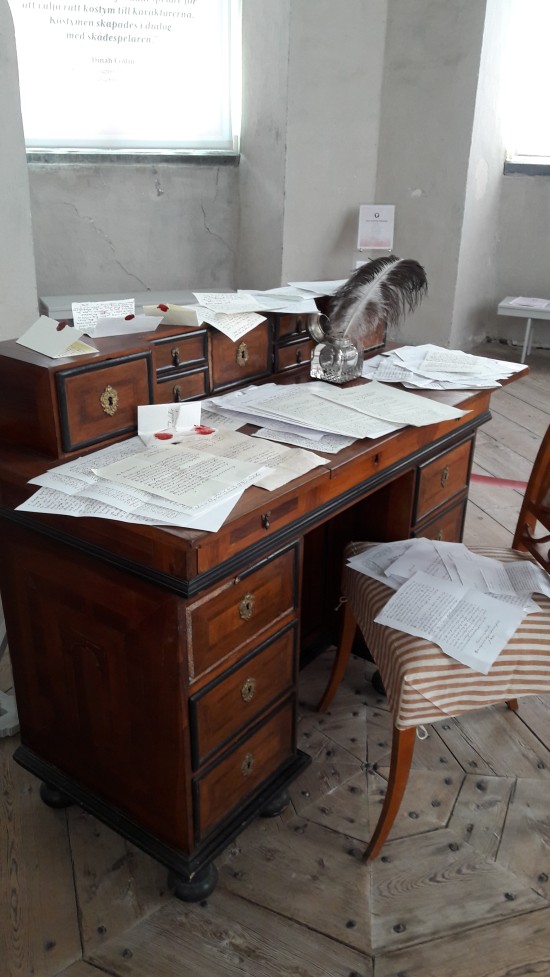Since my last post I have been frantically sewing myself a costume for a ball in a different era (1680!). The film costumes are going back to Cosprop in London in less than two weeks, so I must hurry to walk you through the exhibition. (How on earth could it take me the lenght of a summer to do it?!)
The exhibition ends in the spirit of a Jane Austen novel: with a wedding reception. Three couples are lined up in the grand salon: Elinor and Edward, Marianne and Brandon, and Elizabeth and Darcy.


The painted baroque ceiling is stunning.
First, Jenny Beavan´s beautiful costumes from Sense and Sensibility (1995). The story ends with the wedding between Marianne and Brandon. The other couple to walk out to the cheering wedding party outside the church is Elinor and Edward. Despite all those unexpressed feelings between Elinor Dashwood and Edward Ferrars (superb acting by Thompson and Grant!) they end up getting married. Elinor is elegant in a printed muslin roundgown with a velvet spencer and a bonnet. Edward is dressed in black and white: black tailcoat, waistcoat, breeches and stockings. White linen shirt and cravat, and shoes with buckles. Nothing extravagant or avantgarde here, rather conservative and suitable for a country clergyman. They will settle in the parsonage on the Delaford estate and live sensibly – although comfortably – on 900 pounds per annum.

The Ferrars, Elinor and Edward. Sense and Sensibility, 1995. Costume designer: Jenny Beavan and John Bright.
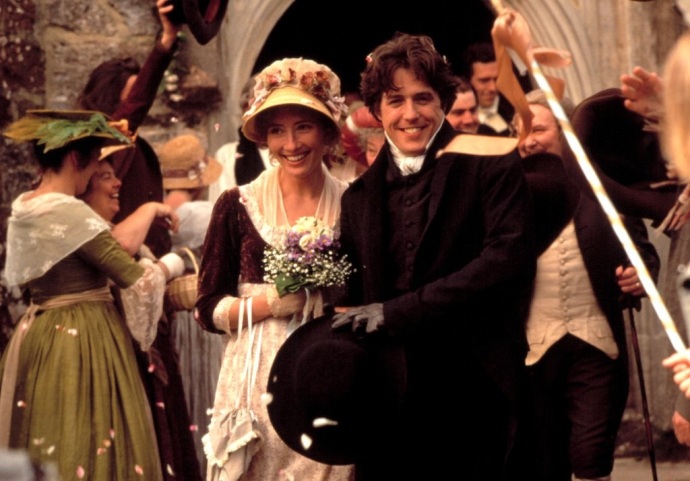
Emma Thompson and Hugh Grant as Elinor and Edward in Sense and Sensibility, 1995. This is of course the final scene outside the village church. Most people probably think it is a double wedding, but it is not. Elinor and Edward are already married and are acting as officiant/best man and matron of honour. (Explained by Emma Thompson in her film diaries.)
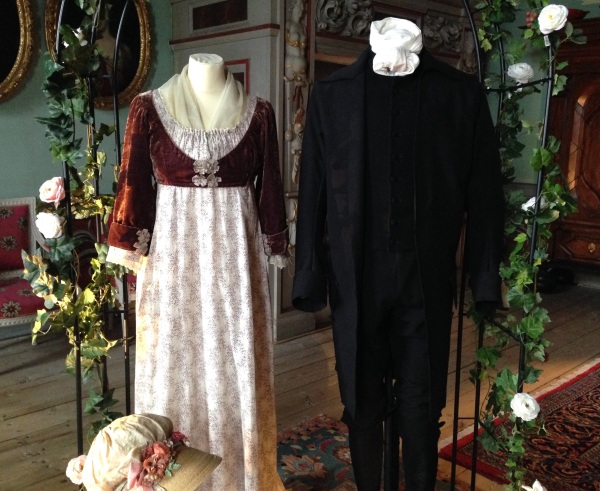

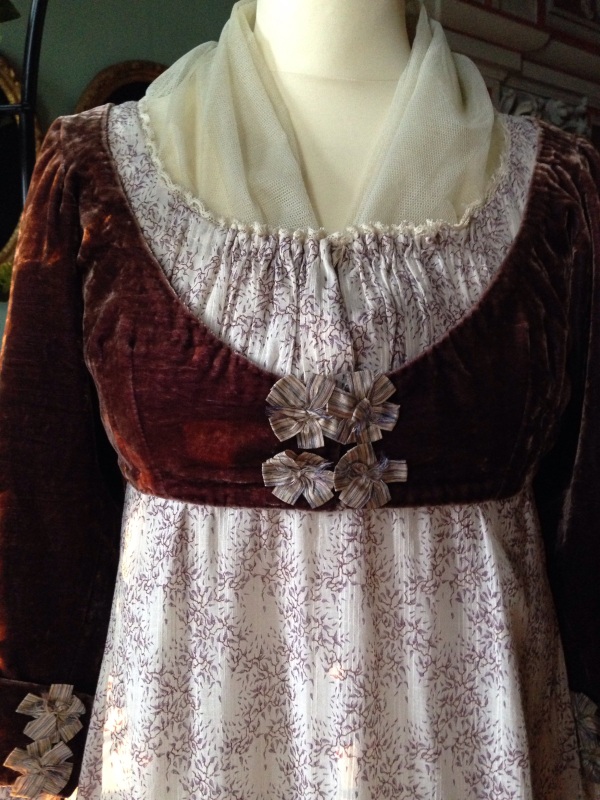
Nice details on Elinor´s velvet spencer. The bows could be vintage. The roundgown has a delicate bobbin lace along the neckline and sleeves.

The bow in the back is never seen on screen but is a nice touch.

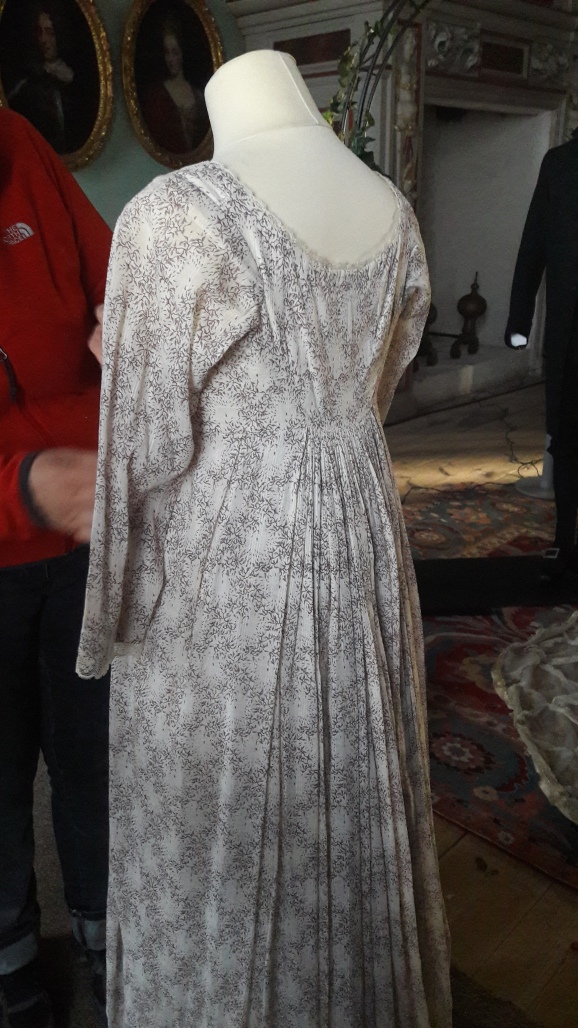
The back, when we dressed the mannequin.
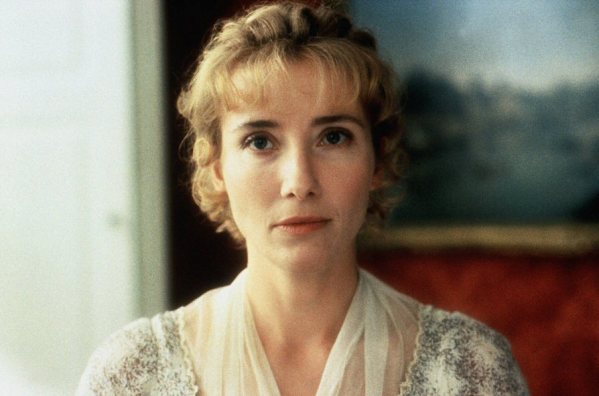
Have you noticed that Elinor is wearing this gown twice? It is first seen in one of the London scenes when the girls find themselves in a pickle, and Brandon turns up to help them. Emma Thompson in Sense and Sensibility, 1995.
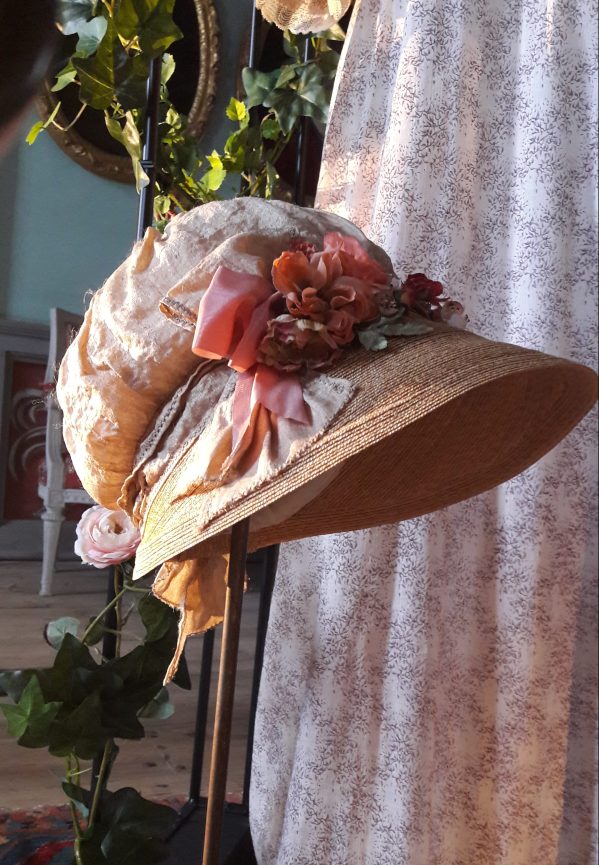
Elinor´s bonnet with all the trimmings.

Elinor and Edward in Sense and Sensibility, 1995.

Edward´s suit. Very late eighteenth century, The restricted light makes it difficult to photograph black wool.

Nice silk buttons on Edward´s coat.

Elinor´s gown has a long train. This is still the 1790´s.

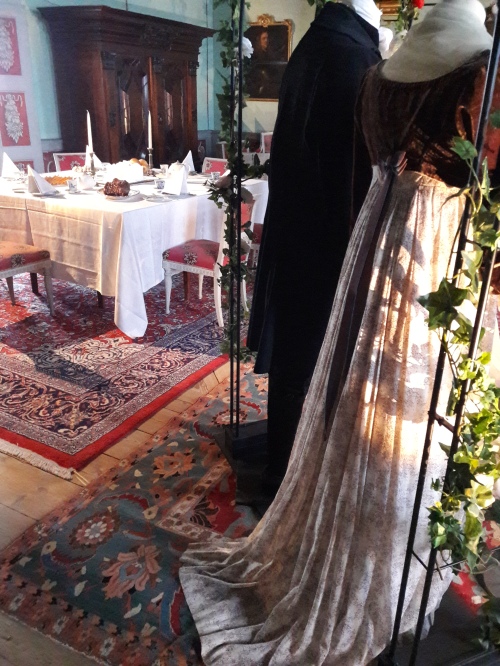
The table is ready for the wedding breakfast.
Marianne´s story is different. She falls passionately in love, gets her heart broken, and finds (a different sort of) love again. Dashing Willoughby is forced to marry another girl but loyal Colonel Brandon has been around throughout the story, and turns out to have qualities that go beyond the age gap. (In the beginning of the story Marianne finds Brandon a boring old man, he is at least 35!) This has been discussed for two centuries by now. Is she attracted to his quiet, gentemanlike manner? His interest in poetry and music? Or is it his estate Delaford and his fortune? Anyway, Marianne is fitted out in a magnificent gown in gold embroidered silk and tulle with a long train. The scene is over in a few seconds, so blink and you miss it.
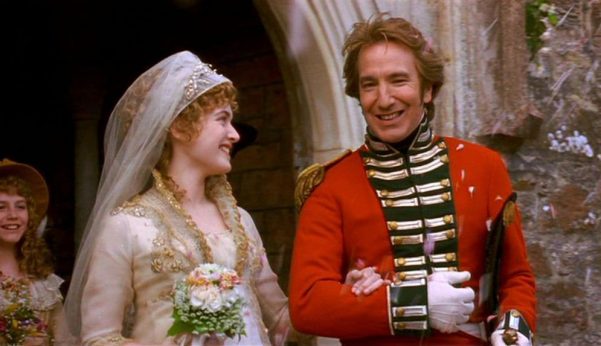
Marianne and Colonel Brandon: Kate Winslet and Alan Rickman in Sense and Sensibility, 1995.
Colonel Brandon chooses to marry in his regimentals. He is transformed from an ‘old man in flannel waistcoat’ to a dashing husband. Earlier we were told that Brandon served in India, where ‘the air was full of spices’… Film scenes are seldom shot in sequence, so the wedding scene was Alan Rickman´s first day on set.

Wedding costumes, worn by Kate Winslet and Alan Rickman as Marianne and Colonel Brandon in Sense and Sensibility, 1995. Photo courtesy Jens Mohr.
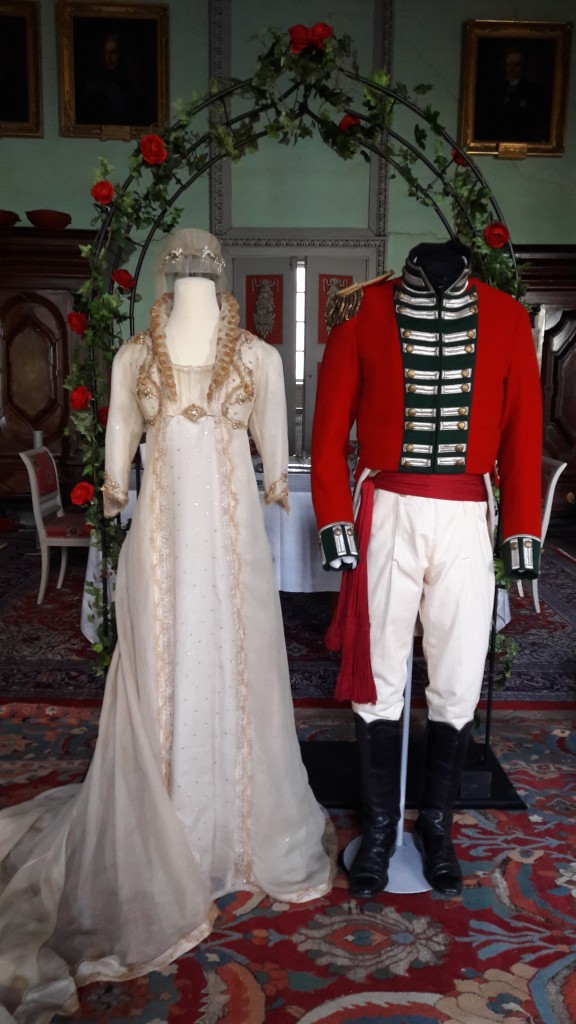
Marianne´s gown and Colonel Brandon´s regimentals. The uniform consists of a red wool jacket with short tails, green cuffs and centre front. The jacket has gold trim and gold buttons, and a gold epaulette. White pantaloons and black hessian boots. A black silk stock and a deep red sash. (The sash was re-tied to the right after this picture was taken.)
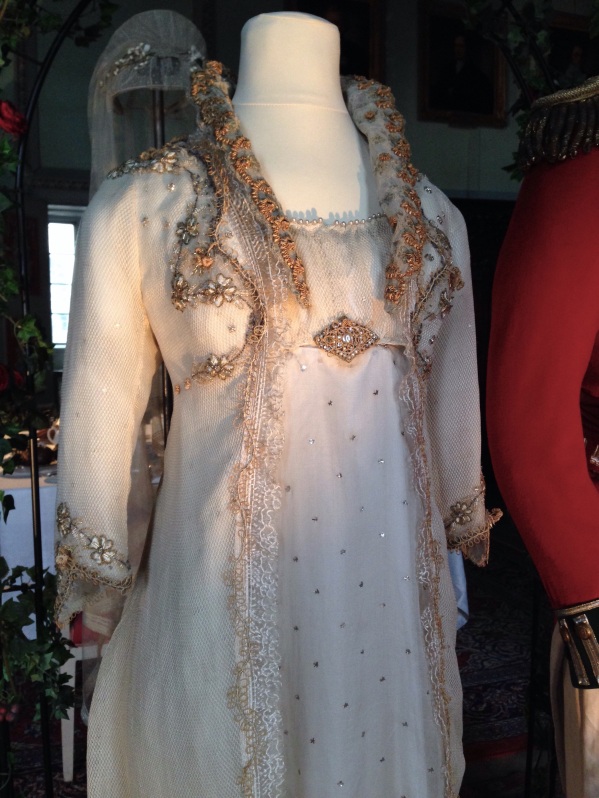
The open robe is in cream net fabric with straw worked standing collar and a long train bordered with open work straw braid and heavy gold and silver beading. The underdress is a cream gauze over silk, studded with tiny silver stars.
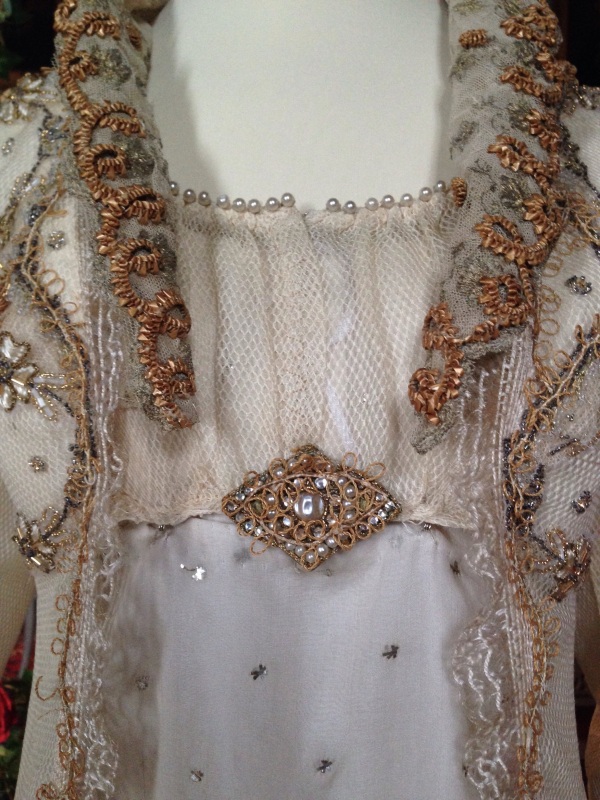
So much work went into this gown!
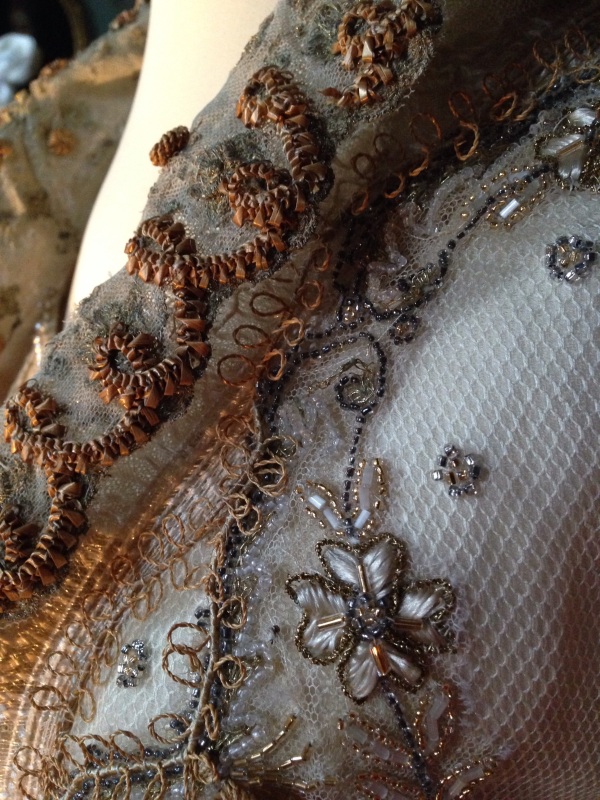
The net overdress with straw embroidery. This type of work was popular in the eighteenth century and several garments survive in museum collections.

Marianne´s bonnet is a delicate veil and flowers on a wire frame.

A young Kate Winslet wearing the costume. Sense and Sensibility, 1995.

Not the best picture, but here is a view of the back.

It took me some time to adjust the linen shirt collar and the black neck stock. This is how they should look.
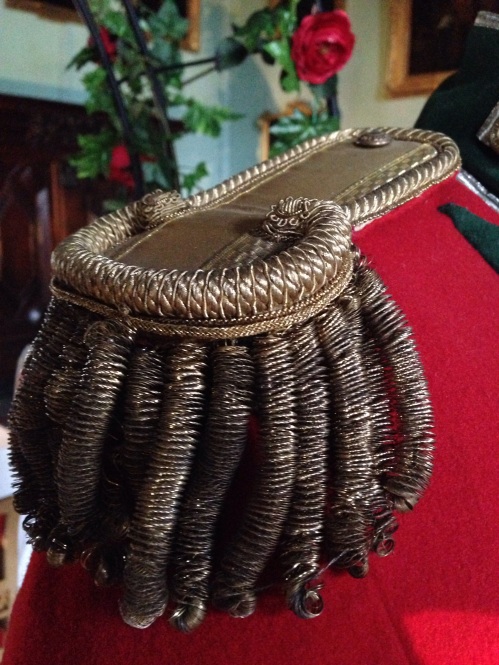
Epaulette on Colonel Brandon´s uniform.
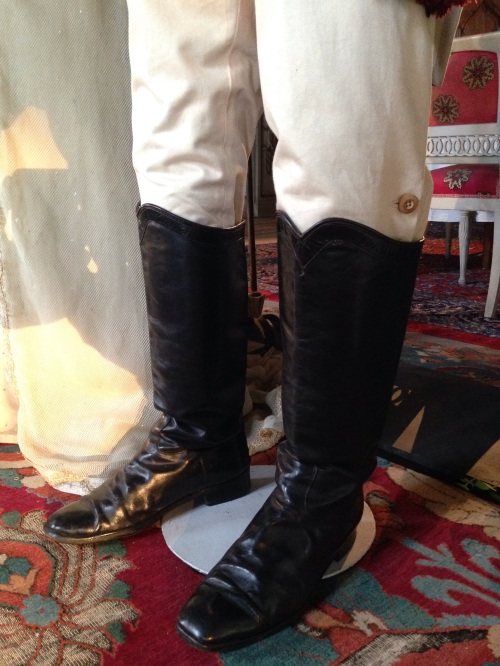
Brandon´s black Hessian boots.
The final wedding clothes are from Pride and Prejudice, 1995. A spoiler alert is superfluous since we all know that Lizzy and Darcy end up marrying. Now, that IS a double wedding in the adaptation. (The weddings are mentioned only briefly in the novel.) Jane and Lizzy, the oldest Bennet girls, marry Bingley and Darcy. Dinah Collins designed the costumes.

A double wedding: Charles Bingley and Jane Bennet, Mr Darcy and Elizabeth Bennet. Pride and Prejudice, 1995. The familiar faces behind them look very solemn, but most of them, except miss Bingley, are extremely thrilled.
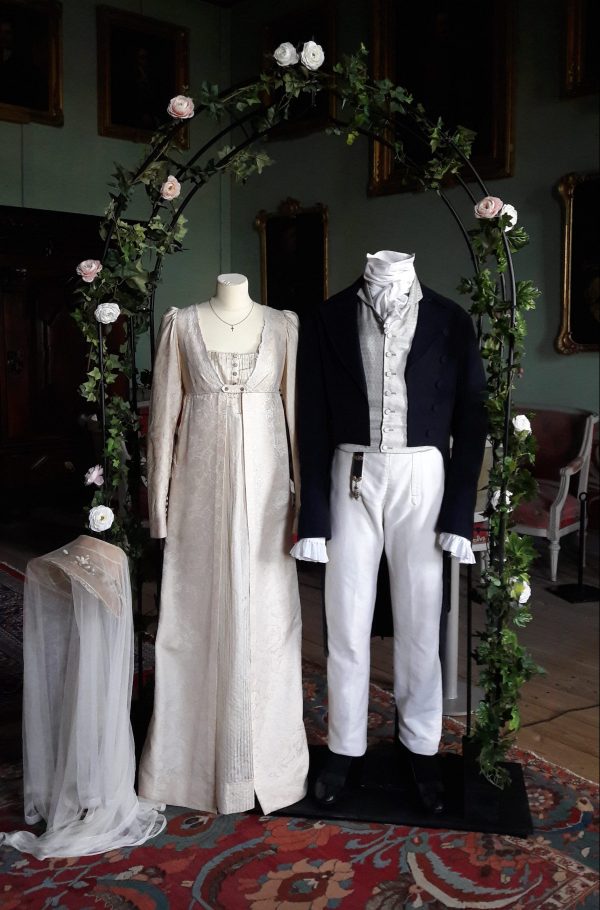
Elizabeth´s and Darcy´s wedding costumes, Pride and Prejudice, 1995.

Lizzy is wearing a lace edged, v-necked silk pelisse over a striped silk dress. Darcy´s attire is correct morning wear: navy tailcoat, cream silk waistcoat, white moleskin pantaloons, and shoes (pumps).
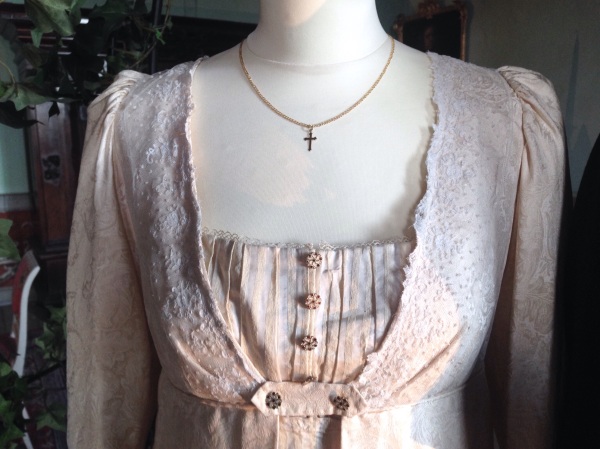
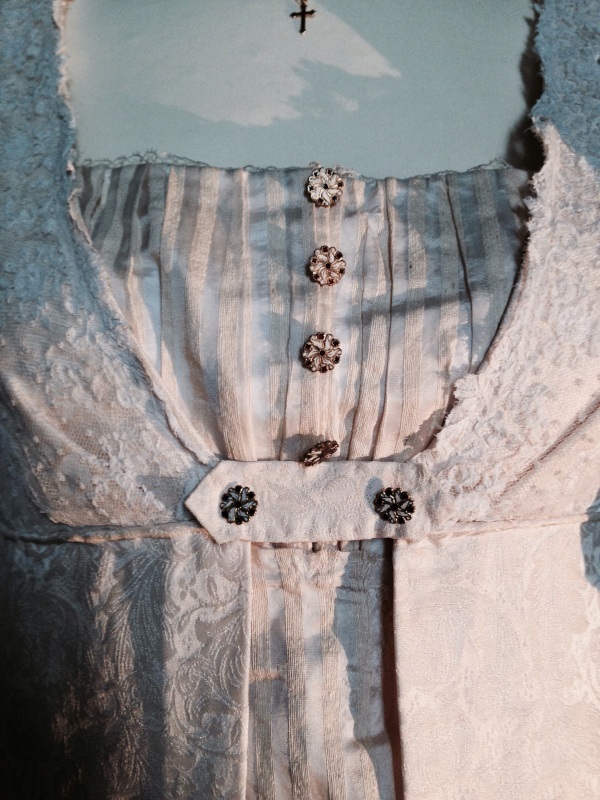
Decorative enamel buttons. A snap button keeps the little ‘belt’ in position.
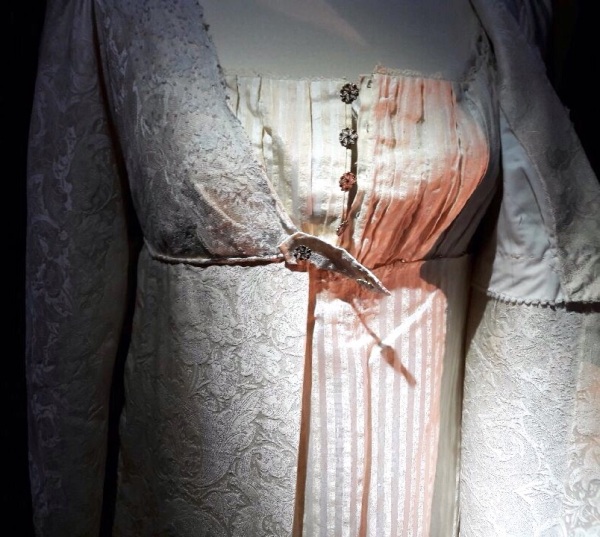
This is how it works: The pelisse and dress are partially sewn together. The striped skirt fastens with hooks and eyes to the gathered/pleated bodice.


The enamel buttons are decorative as the bodice has hooks and eyes. There is a supportive under-bodice with a draw-string.
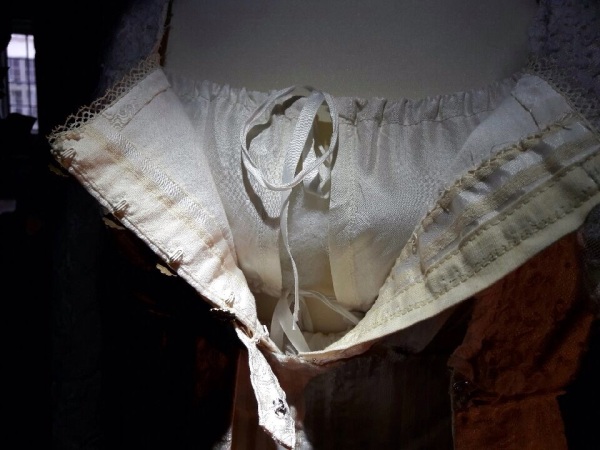
Machine seams…
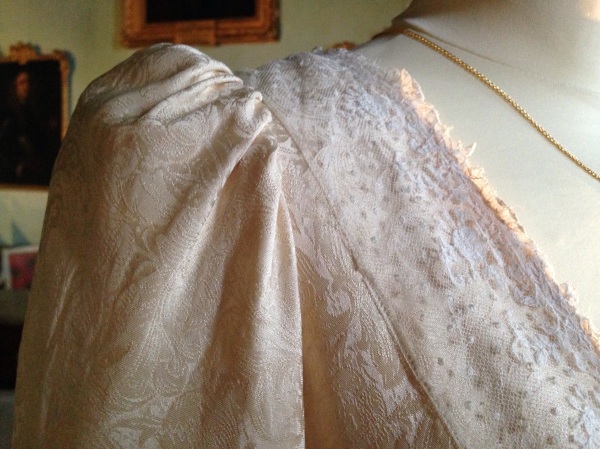
Gathered sleeves on Lizzy´s pelisse.

The fine lace continues around the back. The width of the skirt is gathered in two deep pleats.

Publicity still of Jennifer Ehle as Elizabeth Bennet in Pride and Prejudice, 1995.

Darcy´s morning suit.

Darcy´s silk waistcoat and cravat. The linen shirt has a ruffle. (It is a challenge to tie a decent cravat when the mannequin lacks any type of neck…)
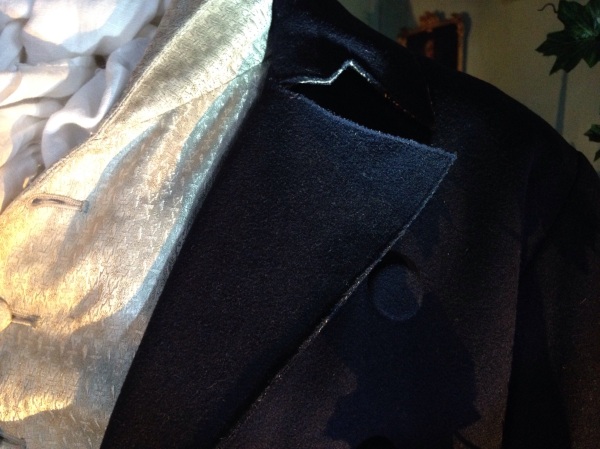
M-notch lapel.

Darcy´s moleskin pantaloons. The fall and the waist buttons with two metal buttons respectively.

Darcy´s watch fob with heart-shaped pendant.
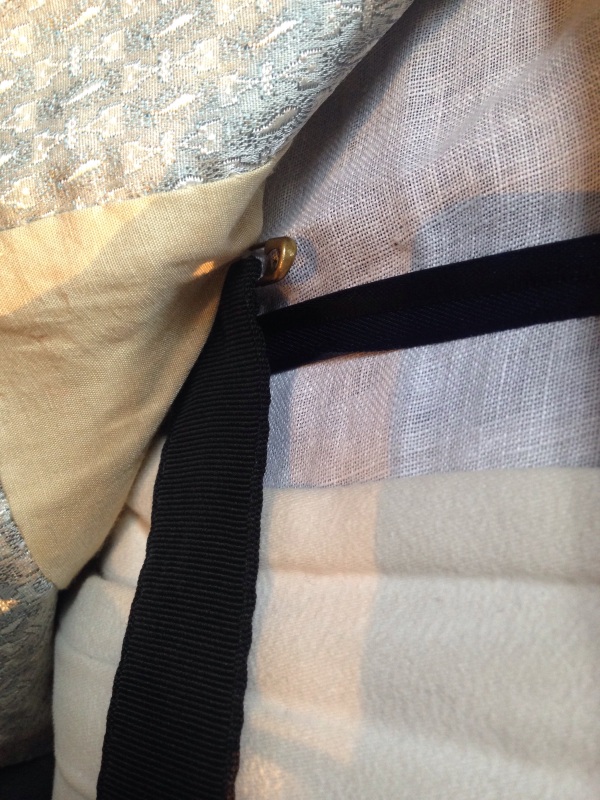
Would you know it: There is no watch! A safety pin holds the fob (ribbon) to the waistcoat. Movie magic…
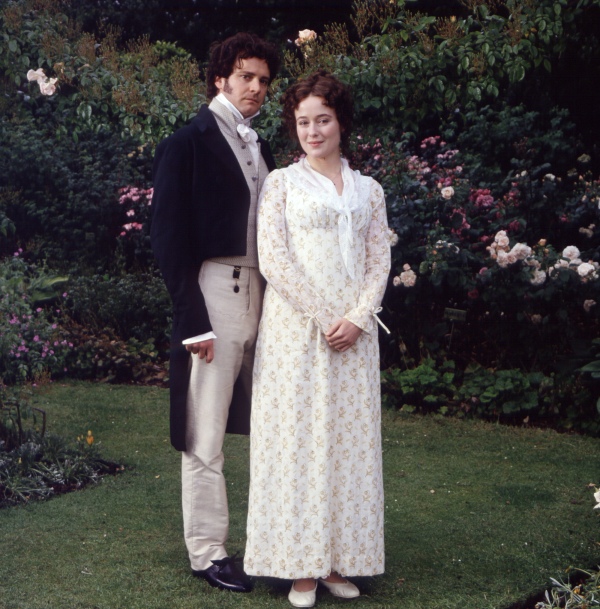
This costume is often seen in a set of publicity stills. Different pendant on watch fob, though. Colin Firth and Jennifer Ehle in Pride and Prejudice, 1995. (Early still with a different wig on Ehle.)

Jennifer Ehle and Colin Firth in Pride and Prejudice, 1995. Darcy is wearing a grey cloak in many pictures. I suppose there were several takes.

‘Three daughters married!’ A winter wedding requires an abundance of swan feathers. Alison Steadman as mrs Bennet in Pride and Prejudice, 1995.
It has been a privilege to study these famous costumes in detail. Of course they didn´t know it back in the 1990´s, but today they are regarded as relics in the Austen-Regency-costuming community. Not everything is historically accurate, but the astounding work they did back then continue to inspire us. Is there a particular costume that you were inspired by? Out of the ones above I´d pick Darcy´s outfit any day! Elinor´s clothes may not look very special, but they are extremely well made, so I have a soft spot for them. But why choose at all?

Looking a bit grumpy because the show´s near the end… This particular day I had a couple of guided tours and acyually managed to tie a decent knot.
Next post will be about some of the costumes I made for the staff and visitors to this exhibition. And I ought to post some pictures from the ball…























